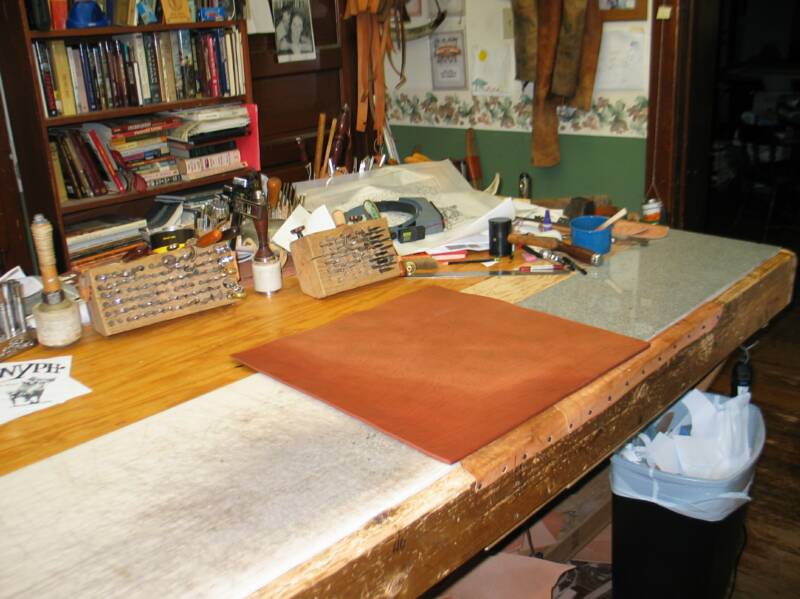The Shop
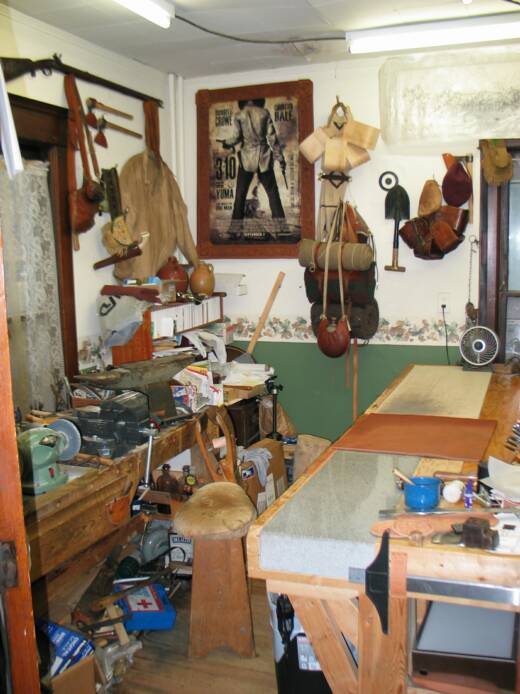
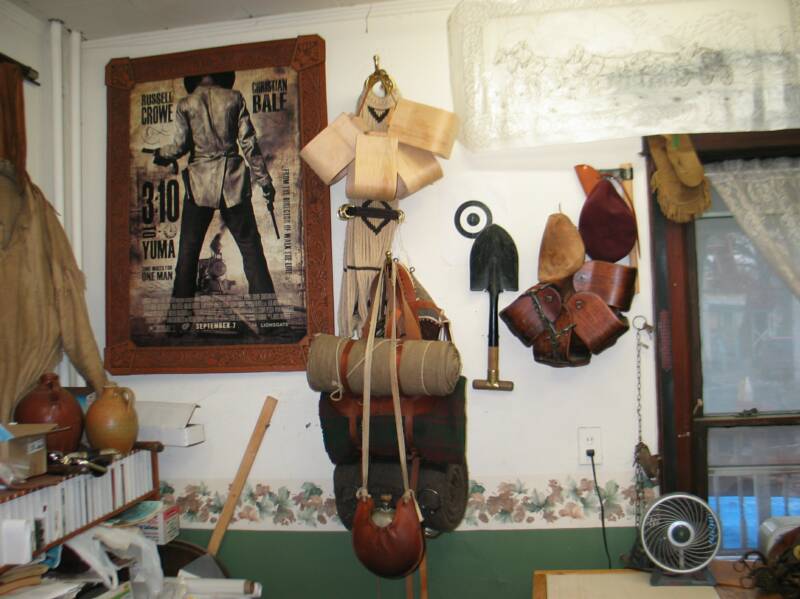
When you walk into my shop, the first thing most people say is, "This place is like a museum!" The next thing they say is, "How do you work in this little room?"
My shop is a small room in the back of my house, about twelve foot square, more or less. The 9' ceiling is covered with five, two-bulb, 4' florescent light banks with expensive bulbs that imitate natural sunlight. The lights are important to get true color representations in the work.
A large table top, 8' x 4', with under-table leather storage, takes up the bulk of the room. A large slab of marble, 4" thick, is set in one end of the table. A poly cut-board runs down the rest of that side of the table. While it is large enough for me to lay out entire sides of leather, most of the time the table is covered with junk. I decided not to clean it up for the photo shoot.
My old work table runs along the wall, my stitchin' pony in between.
Stirrup blanks, go-pack, canteens, camp shovel, bits, cinchas, small traps, tomahawks, and patterns for future carved leather paintings hang all over the walls. When you see bull's eyes on my walls, those are for practicing my target acquisition sight pictures and steady trigger squeeze.
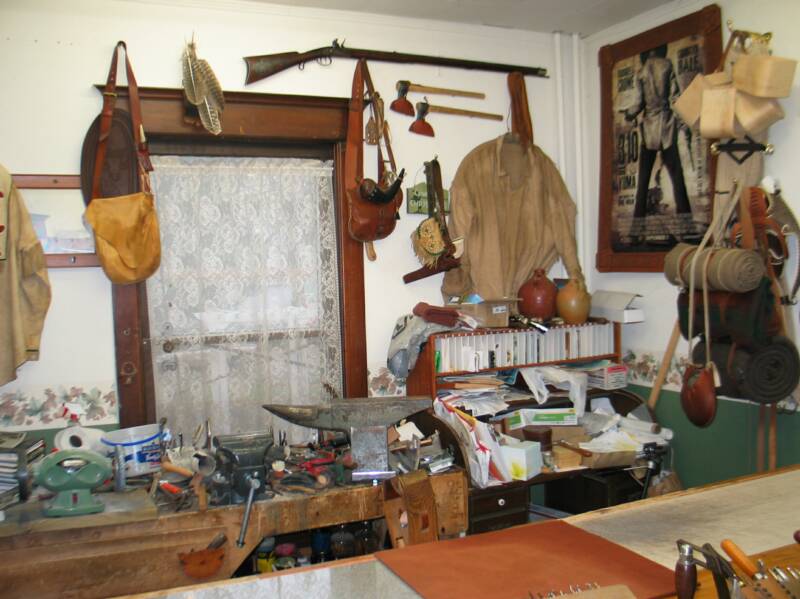
My shop is also where I build an occasional flintlock rifle, like the 1820s style Hawken reproduction hanging on the wall. It also doubles as my blacksmith shop, till I get my blacksmith lean-to built out back.
Pictures and cards my youngest sons have made, decorate most of the open spaces in my shop. A photo of my oldest daughter, (who was seldom around), is on a stick so we could hold up her face between us for family photos. We call it, "Sarah on a stick." A lot of my adventure gear is stored on my walls as well.
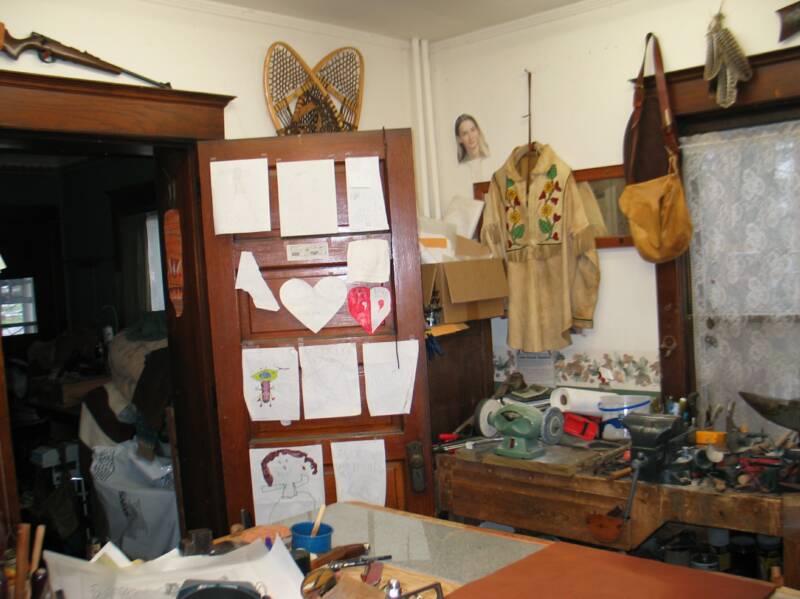
Indian corn hangs drying next to cinch straps awaiting saddles. My greasy mountaineer leggin's hang with my Spanish-style chaps. On the wall are magazine covers, old awards, and more trophies made by my little boys. My book shelves are crammed to overflowing with history books and saddle references. Old saddle patterns are stacked on top of the bookshelf.
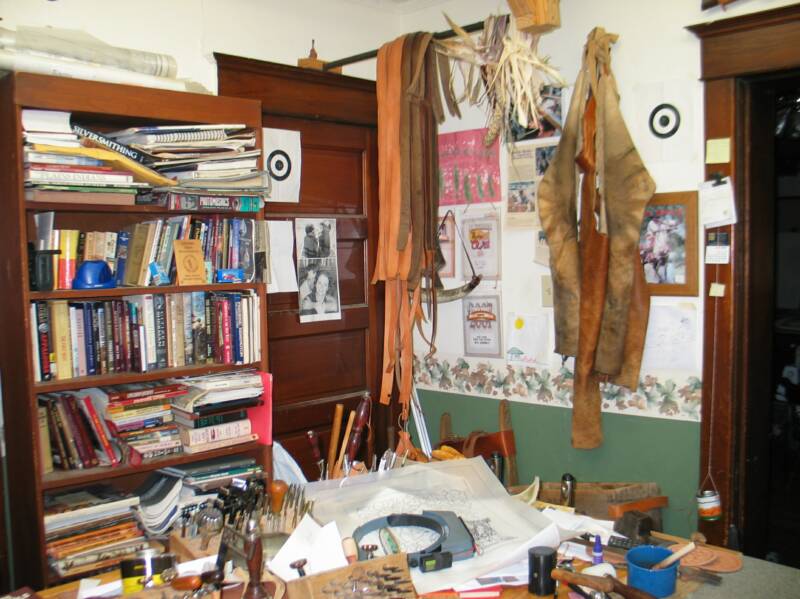
For a guy who does leather work for a living, I have very few tools. Even at that, I've got more than I really need. A large square of leather sits on my table drying out. I'm fixin' to carve a promotional piece for the new tool I patented, but got the leather too wet.
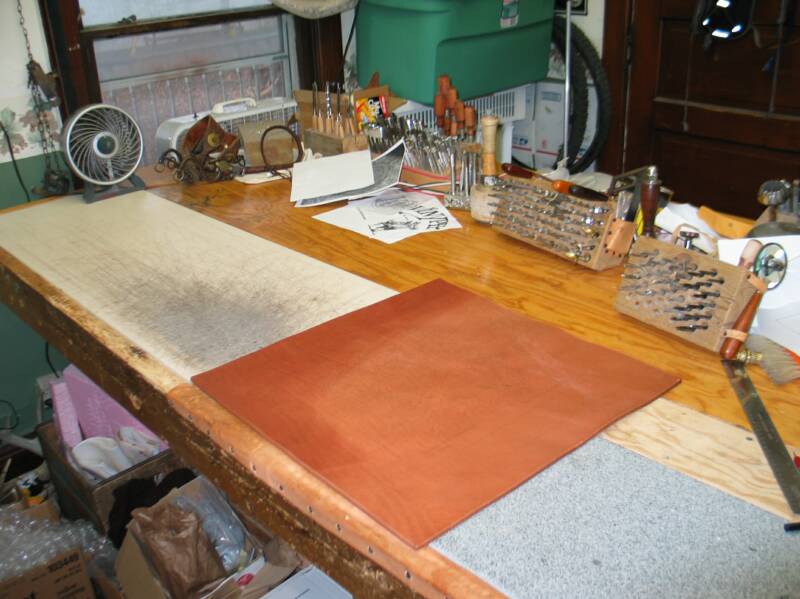
A view of the other end of my table rounds out the remainder of my tools. You may notice the jeweler's magnifying hood laying on the stack of papers and whatnot. My eyes have long since given up their elasticity. I have to wear reading glasses to work and magnifying lenses to do the close-up work I use to be able to do just by concentrating. If you knew what to look for, you would see the tool I invented. The very first proto-type I made out of carved elephant ivory and solid silver. Not counting the time involved, workmanship, or legal fees, I have almost three hundred bucks tied up in ivory and silver in that one tool. But, someday it will probably live in a museum.
That's my shop, except for the saddle stands, buffalo robes, Navajo saddle blankets, stacks of leather and sheep skins, more books, longhorn skull, drill press, crate 'o guns, antique Singer treadle patch-sewing machine, and other items that have spilled out of my workshop into the library next door.
